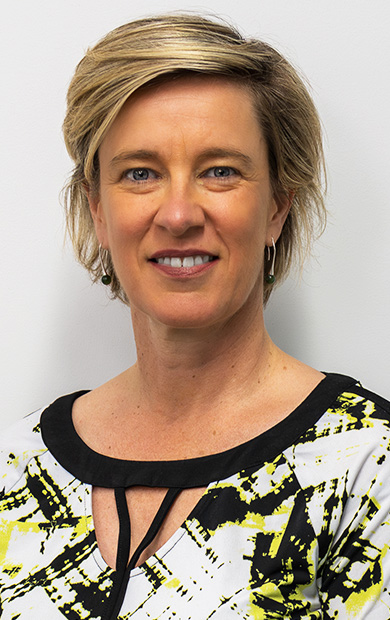AS 3015: Standard to Support Lightning Speed Telecommunications

The way we communicate has evolved rapidly in the last few decades. Humans throughout history have always needed the means to communicate, from oral stories to cave paintings, smoke signals, and carrier pigeons. The oldest known piece of mail can be traced back to 255 B.C, Egypt1. Nowadays, sending a letter is unheard of, as we can communicate instantly via social media or text, we can even video call anyone from anywhere.
Furthermore, organisations communicate internally and externally using multiple software and communications platforms. All this is thanks to telecommunication providers and networks.
It’s no small feat to service millions of people who rely on telecommunications networks. If these services were to fail, so too would our ability to communicate. As such, this important task requires continually evolving technology and expertise.
To support industry in its efforts to serve its customers and support consumers safely and efficiently, Standards Australia has published AS 3015:2022, Electrical installations — Extra-low voltage power supplies and service earthing within telecommunications networks.
The standard is a revision of its 2004 predecessor and includes three key components: power systems, extra-low voltage (ELV) and earthing.
Power Systems
AS 3015:2004 was developed when a large part of Australia’s telecommunications infrastructure was housed inside buildings and shelters. At the time of publication, the standard reflected the industry’s needs and best practice.
As time went on, several key changes occurred in the Australian market, including the deployment of a national broadband network and, more recently, the deployment of 5G technology Telecommunication facilities changed too. While telecommunications servers and technology are still housed in buildings several stories high, additional locations and infrastructure are in place, such as rooftops, pole-mounted equipment, and more. The need for high-speed internet introduced fibre-to-the-node (housed in cabinets on the street) fiber to the curb, fiber to the building, wireless broadband
“Historically, telecom switching centers primarily carried voice and data from point to point. They did not hold customer data other than billing and accounts information. Today we are seeing an explosion of data centers collocated with switching equipment and operating as standalone. These data centers provide an enormous amount of cloud storage of customer data ranging from financial information, operational data, social media data, conference calling data and much more,” said Rohit Narayan, Chair of EL-001 subcommittee (EL-001-18), Telecommunications Network - ELV installations.
“The old standard was not broad enough and specific enough to meet the needs of changing technology. AS 3015:2022 provides guidance on maintaining continual extra-low voltage power supplies needed across telecommunication networks.”
Extra-Low Voltage (ELV)
The first part of the standard contains information on the design, installation and maintenance of extra-low voltage (ELV) power systems which are an integral part of the telecommunications installation. It also provides a clear demarcation on the applicability of this standard in conjunction with other standard like AS/NZS 3000, Wiring Rules.
The size and form of ELV power system has changed significantly over the years and this standard addresses these changes. There have been a number of new battery technologies like lithium ion batteries in addition to traditional lead-acid technologies. The ELV power conversion technologies have become more modular and compact.
“In a modern telecommunication facility, voltages higher than the ELV voltage may co-exist in the same room or cabinet. The proper segregation and protection of these systems that coexist must be given significant attention,” said Mr Narayan.
Earthing
With complex technology housed in a variety of facilities, surging with electricity, there are risks of electrical damage or electrocution. However, this risk is mitigated with a method called ‘earthing’ (or ‘grounding’). Electricity is attracted to a tower, which is then diverted to a metallic conductor, buried in the ground, mitigating the risk of electrocution or electrical damage.
Earthing systems also help with mitigating ‘electrical noise’, which is an unwanted disturbance in an electrical signal. Electrical noise can cause errors in the transmission of data. Modern equipment has technology built in to correct these errors. However, errors caused by high levels of electrical noise and other factors can result in re-transmission of data to allow for error correction. This re-transmission can eat up part of the telecom bandwidth. A classic example of this is when tested data speeds on computers show reasonable speed but it feels slow to the user.
“If the earthing system is poor, this can lead to damage from power surges and lightning strikes. It can also cause malfunctioning of telecommunication equipment due to high noise level. And importantly it can also cause hazardous situations, like risk of electrocution,” Mr Narayan concluded.
AS 3015:2022 has updated requirements for earthing on buildings and shelters, outdoor cabinets, pole-mounted equipment, and rooftops.
AS 3015:2022, Electrical installations — Extra-low voltage power supplies and service earthing within telecommunications networks, can be purchased via the Standards Store and is available via Standards Australia’s distribution partners.
media enquiries
For media enquires, please contact:

